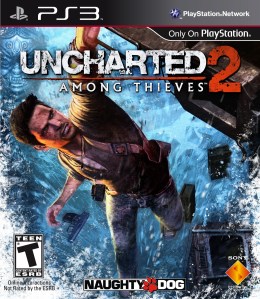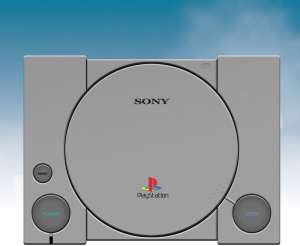Catch up on the conversation here: The Playstation and Me: David Jaffe, Part 1.
In this next part of my talk with David Jaffe, he discusses the possibilities that the original Playstation opened up and the way it changed how the mainstream thinks about gaming. Read on.
So, when Playstation shows up, what did it mean to you then?
Oh yeah. I was there the day the Playstation walked in. And it was like, what is this? What is this thing they’re talking about? I remember they showed us, they gathered us around, and Rich Robinson –who ran the group at the time–showed us a videotape from Japan. The gist was basically, OK, Sony is getting into the console market. And at the time, we were making games for Sega. We were making games for Nintendo. And the idea was like “what?!” It wasn’t even on anybody’s radar–internally, at least–that we’re going to become a first party console creator. And so he showed us the videotape. I’m not trying to be hyperbolic but I felt it: A corner had been turned. It was a watershed moment.
Because, especially as a designer, we had been so used to 2D. And yeah, you’d seen a little bit of 3D in military simulations and certain PC games were doing it. But most gamers’ radar was locked to 2D. And as a designer, it was getting to the point where you couldn’t do much more with it. If you remember at the time, it was ‘94, ‘95, and it was like, everything was sort of an acute mascot character, kind of aping Mario and Sonic. And it was like, how much more of this can we take? We wanted to do what now are such simple things like, “Hey, let’s change the camera for a new perspective so it gives the player a little bit of new gameplay, and a new sense of drama.”You couldn’t do that in 2D. You could, but it became an entirely new huge endeavor on the part of the creators of the game to do that. Suddenly, here we were with 3D, and it was really like being given a little movie set where you could fly your camera around your level and you can cut cameras. I mean, that was a revalation. We were like, “Oh my God! You can actually go in for a close up. You can change from a side view to an over the shoulder view. Are you crazy?” I remember Disney had put out this game on the PC called Stunt Island. This was after we had seen the Playstation videotape. It really was having to rewire our brains of how do you make games in 3D. Because they had this game called Stunt Island where you could create your own 3D little landscapes.
And I remember we spent days going, “Well, shit, how do we keep the player from just going wherever they want, whenever they want? And how do we create a game?” So it was all of this new thinking that watching that video kind of created amongst me and my fellow designers at Sony. That was just absolutely amazing! It was in the graphics obviously. The big demo, the famous demo that everybody saw was the dinosaur. Jurassic Park had just come out. They basically had this tech demo where you could kind of rotate around a dinosaur, and I think you could make him growl or snap or whatever. And they was just, holy cow, this is amazing. I think that was the moment. And then the other moment was being at E3, the very first E3 in ‘94, ‘95. It was ‘95 I think. I don’t know if you were at that E3?
I was not.
They had this big video screen and every minute they kept showing this live action video they had made to introduce the Playstation. It was the first time that the idea that video games could be publicly cool entered, I think, so many people’s minds. Clearly the marketing people, and maybe [former Sony executive in charge of Playstation] Ken Kutaragi, drove this. I’m not sure where it came from, this mandate. But, that clearly was the intent. Because this video was cool kids playing video games. It was cool games like Wipeout. It was cool music. It was like, as proud as I am to fly my geek flag, there was something really neat about the idea that Sony was positioning video games to be something that could appeal to a lot more people, and could actually be something seen as a cool activity versus an activity, up until that point, had really been shoved into the basements of geek households. I thought that those were the two things that when we saw Playstation, both the marketing endeavor at E3, and the original 3D graphics, and what the games can be a year before that, those were the things to this day stand out as moments that were like “wow, this industry is changing.”
I think in a lot of ways, people talk about MOVE or 3D or 3D graphics or physics or whatever as what the Playstation brand has brought to the market, of which there are many things. I really think one of the biggest things that Playstation did, and Sony did for video games, really is opening up an entire world to this great hobby, that up until that point, really had been the territory of geek hobbyists like myself, and suddenly making it cool and making it acceptable. I think that is probably the greatest legacy of the Playstation.
 When you think about the recent anniversary for the PS2, one of the things that emerges was that it was a trojan horse for the DVD format in the homes throughout America and the world, right? It’s a classic two-in-one argument. You’re getting a DVD player and a really great game machine. So Playstation has had a technical and a cultural component to it almost at every iteration. I think that’s part of its DNA at this point.
When you think about the recent anniversary for the PS2, one of the things that emerges was that it was a trojan horse for the DVD format in the homes throughout America and the world, right? It’s a classic two-in-one argument. You’re getting a DVD player and a really great game machine. So Playstation has had a technical and a cultural component to it almost at every iteration. I think that’s part of its DNA at this point.
Right. I think so.
Another question: I’ve always heard that the Playstation is a hard machine to program for. Every iteration of the console, the way they manage memory, multitasking the processors, etc. Can you attest to that, if that was your experience? How did you learn to get comfortable with the hardware?
Yeah. I’m not a programmer. I’m kind of like, it’s the equivalent of asking a movie director that doesn’t operate his camera, hey is it true that this iteration of the Panaflex is a pain in the ass? I don’t know. So I can tell you what I hear, which is, certainly the PS1 wasn’t as bad of a beast. I know, at the beginning, the PS2 took awhile for people to get their heads around. But eventually they did. PS3, to be perfectly fair, I think that’s a pretty accurate statement. Even to this day there are guys, who are some of the best in the business, are still like, “Yeah, this is a great machine, but man it’s a beast.”
 But on the flip side of that, I think there’s enough evidence now if you look at games like God of War III and Uncharted. And if you look at certain games, not all, but certain games that certainly have the Playstation 3 as the lead development platform. There was a rhyme or method to the madness. Yes, it’s a bitch at times to create on, but it really is the kind of machine that still has a lot of life in it. And so I think when you put it up against the Xbox 360 games, which is our main competition, it’s really clear that visually you can create worlds that are a lot more impressive on it.
But on the flip side of that, I think there’s enough evidence now if you look at games like God of War III and Uncharted. And if you look at certain games, not all, but certain games that certainly have the Playstation 3 as the lead development platform. There was a rhyme or method to the madness. Yes, it’s a bitch at times to create on, but it really is the kind of machine that still has a lot of life in it. And so I think when you put it up against the Xbox 360 games, which is our main competition, it’s really clear that visually you can create worlds that are a lot more impressive on it.
That’s not a knock against the 360, because I love my 360. But I do think it kind of speaks to the risk vs. reward and the gamble of making a console like the PS3. It’s like, OK, yeah you can make a machine really user friendly, like it sounds like the 360 is, but it comes at a cost, which is usually a hit to your visuals.
That’s an interesting take.
It’s not that the 360 doesn’t have great graphics. I think Gears of War 2 is probably one of the best-looking games on the 360. But, as beautiful as that game is, I don’t think it holds a candle to say God of War 3, or Uncharted 2.
We’re getting into the whole “Graphics Uber Alles” argument, which isn’t always productive. But I see what you’re saying.
I don’t tend to agree with that personally. But I understand business wise it’s a pretty valid argument.


